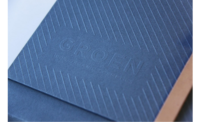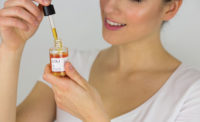There are many items that are personalized today, such as mugs and pillows or keychains and picture frames. In the food and beverage space specifically, we see personalization through campaigns like “Share a Coke,” where Coca-Cola featured common first names on bottle labels. But truthfully, personalization is so much more than a name game; it is a broad term brands use when leveraging customer information to provide a customized experience.
In our latest study, “Packaging and the Digital Shopper: Expectations in Health and Beauty,” 62 percent of respondents did not see a value in health, beauty and personal care items personalized with their names. This makes perfect sense in the health and beauty category. Do you as a shopper want to purchase a Kleenex box or tissues that say “John Smith”? However, according to the survey, shoppers did see value for products specifically customized for their skin or body type with personalized instructions and major brands are taking notice of this unmet need.
For example, Rhianna's beauty brand, Fenty, launched more than 40 foundation shades in hopes that shoppers can find one that best suits their skin type and undertone. But eSalon demonstrates that personalization in beauty can also mean tailored instructions. eSalon has the shopper fill out a hair care questionnaire and submit photos to create custom hair dye. The labels are also personalized with the consumer’s name and the instructions are tailored to the customer’s unique hair color.
The health and beauty study also uncovered that 22 percent of shoppers are highly likely to purchase or would like to see more products with personalized instructions. It is clear that from hair care to over-the-counter (OTC) medications, providing usage guidelines or instructions that are clear, customized, visually appealing and easy-to-read is an innovation area for brands.
While it is true that personalized labels with a name alone may not be seen as high-value to the shopper, if the product is customized, then a label is considered a unique identifier. This concept can be used with OTC and prescription medications as well. New start-ups like Pill Pack, offer prescription medications in a single pill pack, marked with medication and date and time to take it.
Where Color Plays a Role in Personalization
Retailers in the past have also used color coding with much success. In 2005, Target reinvented the prescription bottle. Designed by Deborah Adler after her grandmother accidentally ingested her grandfather’s medications, these prescription bottles come with color-coded rings around the neck, featuring labeling on the top of the bottle and easy-to-read prescription information. Unfortunately, CVS did away with that type of packaging when it opened its pharmacies inside Target stores and Target customers became frustrated. In fact, some began reusing their original bottles with the color-coded rings, even though the labels didn’t have the correct expiration date because it was easier to tell their prescriptions apart.
Beauty brands can also look to color within brand packaging to help them provide a custom experience. ColourPop is a growing online cosmetic company that allows shoppers to purchase eyeshadows in single pods and each shadow can be placed into a larger six- or 12-pod case. There could be plenty of opportunities to personalize that eyeshadow packaging with the name and eyeshadow colors while providing customized tips on the application using those specific color palettes. Here’s where color consistency comes in: when the consumer unboxes the item, if the product color looks off or doesn’t match what they saw online when they chose their colors, shoppers return the product in fear that the product is not what they chose (or even fake). Consistency is still key, perhaps even more so in customization. When consumers choose a specific color to create their own product, they are probably more committed to that color, have invested more thought in choosing that than if they picked a set of predetermined eyeshadows off the cosmetic wall.
As consumers continue to give away their shopping preferences and information, thanks to technology, their desires to feel as though products are customized and suited to their needs will continue to increase. Color is a very easy way to both identify and personalize health, beauty and personal care products. There’s plenty of room for innovation within personalization; health and beauty brands that capitalize on this trend can potentially find increased brand loyalty from shoppers craving tailored product and packaging. More importantly, color can play a pivotal role in the selection and customization of products — and color consistency across the entire product and packaging experience can ensure satisfaction stays high and return rates stay low.




